
The RCA Type KU-3A
Unidirectional ribbon microphone
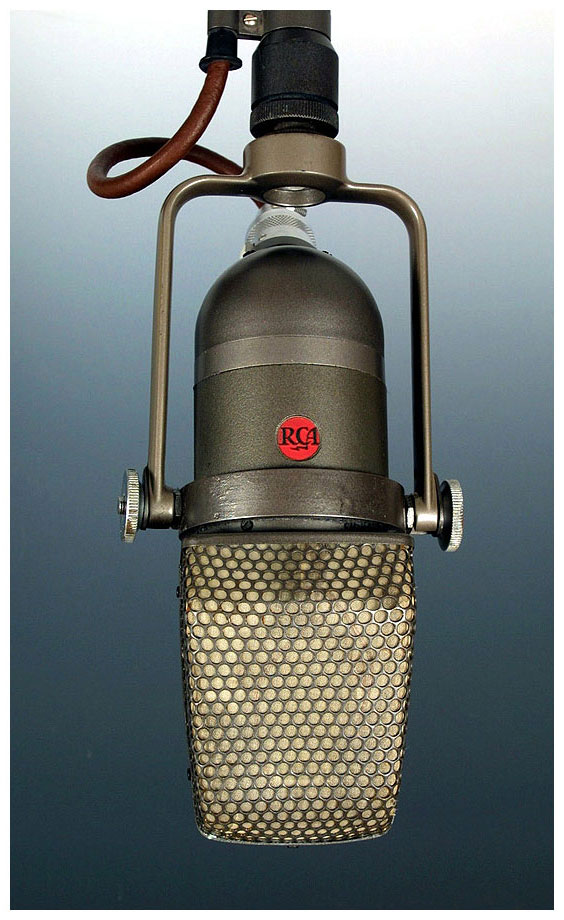
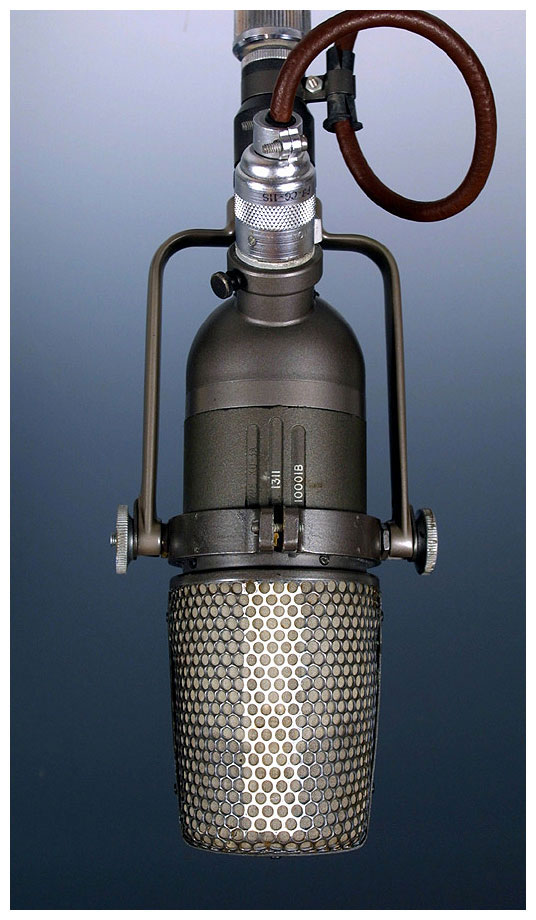
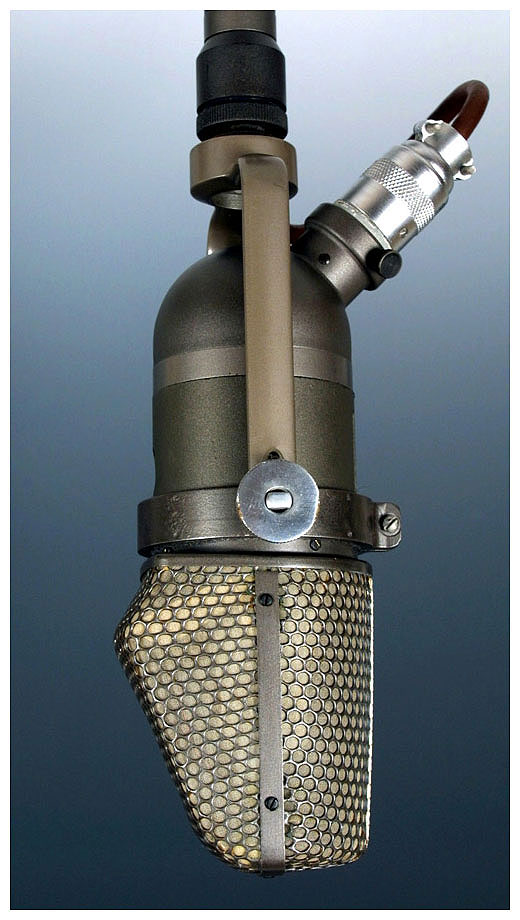
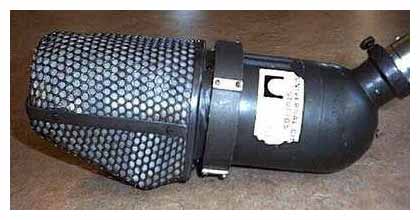
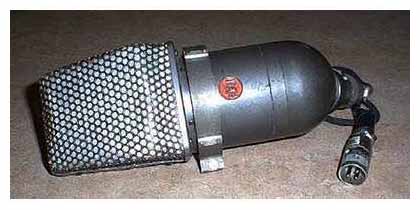
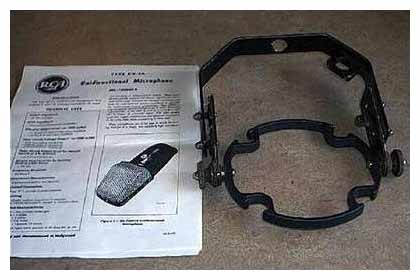
This one went for $2,291.66 on eBay in January, 2002.
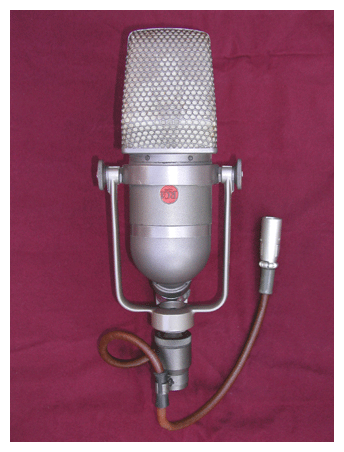
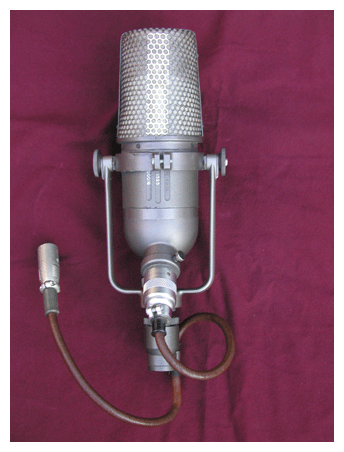
This one went for $2,607.00 in December, 2002.
Description
The Type KU-3A Unidirectional Microphones were designed to meet the exacting requirements for sound-film recording at motion-picture studios. These microphones provide uniform and smooth reproduction over a wide audio range (suitable for dialog and music), and have the unidirectional pattern considered so desirable for sound-motion-picture applications. The exhibit a high sensitivity for sound originating in front. Rejection (cancellation) at the back is such as to provide a new low in output of unwanted signal. The light weight, small size, rugged construction, and attractive appearance of the units make them outstanding in their field.
These microphones are of the type in which the moving element is a single thin extremely light corrugated metallic ribbon. The ribbon is suspended in an air gap between the poles of a permanent magnet, so as to vibrate freely with a motion corresponding closely to the motion of the air particles of the sound wave striking it. The voltage generated as the ribbon cuts the magnetic lines of force is the electrical equivalent of the velocity of the particles of the sound waves. An acoustical labyrinth formed in the cylindrical section of the microphone below the magnet and pole-piece assembly is coupled to the air gap by a tubular connector. This connector is sealed to the rear of the air gap, and contains a small silk-covered opening in the plate at the rear. The cloth-covered opening is of suitable dimensions to provide a unidirectional response characteristic for the microphone. The ribbon and magnet assembly are enclosed in a cloth-lined perforated-metal grille assembly which provides protection against mechanical injury, dust, and to a certain extent wind. The hemispherical shell below the acoustical labyrinth covers an impedance-matching transformer with output taps for 30, 150, and 250 ohms impedance. A three-pin output receptacle (male) is mounted on the shell, and 180-degree rotation of the shell is possible as a means of changing the output receptacle location.
The microphones are finished in a flat two-tone umber gray. A three-fourths inch white reference stripe on the back of the grille assembly is provided as a “panning” guide to the boom man, to indicate the “dead” side of the microphone.
Sensitivity
The Type KU-3A Unidirectional Microphone has a higher order of sensitivity than other previously manufactured RCA film-recording microphones. The sensitivity is approximately 6 dB higher than that of the double-ribbon type of unidirectional microphone, and approximately 4 dB higher than that of current models of high-quality pressure and velocity microphones.
Directional Pattern
These microphones have a very uniform response for sound incident at the zero axis (at the front of the microphone), with the output decreasing slowly as the angle of the sound source with the zero axis increases. The pickup angle may vary approximately ± 50° from the zero axis with less than one dB difference in output, and approximately ± 90° before the output is down 6 dB over the frequency range normally reproduced in theaters. The broad solid angle of relatively equal response reduces and simplifies “panning,” and makes possible the coverage of practically any action with a single microphone.

Figure 4 — Directional Patterns
The directional patterns at different frequencies as shown in Figure 4 are based on plane-wave sound incidence. Rejection (or cancellation) for plane waves at the rear of the microphone is such that output is down 20 dB or more at the 180° incident angle over a broad band of frequencies. However, as the distance between sound source and microphone is decreased (and the wave front becomes increasingly curved at the microphone), the cancellation of low frequencies is reduced.
The loss of directional characteristics at low frequencies and short distances is such that the output at a one-foot distance from the microphone to sound source is very nearly the same at the back of the microphone as at the front. For example, the 80-cycle output is + 1¹/2 dB (approx.) at the 180° incident angle as referenced to zero dB at 1000 cycles for a zero-degree incident wave front at one-foot distance (the 80 cycle zero-axis output is accentuated approximately + 3½ dB, due to the low-frequency tip-up characteristic experienced by velocity-type microphones at close distances).
If a qualitative performance test of the unidirectional microphone is to be made, it should be observed from the above that voice tests at one or two feet are relatively meaningless unless carefully interpreted. Tests should normally be made with the sound source four feet or more from the microphone in order to obtain experimental results comparable to the plane-wave directional patterns shown in Figure 4.
Frequency Response
The frequency response is relatively uniform over a wide audio range (see Figure 5). As previously noted, the microphone exhibits to a certain extent the low-frequency accentuation characteristic of a velocity microphone when operated at close range, though to a lesser degree than standard bi-directional ribbon microphones. For normal response, the microphone should not be employed at distances closer than three feet from the sound source, and four feet or more is preferable.

Figure 5 — Frequency Response
Operation
The microphone should ordinarily be suspended at an angle of approximately 45° to the floor of the sound stage, with the microphone just outside the camera angle. The zero-degree axis (perpendicular to ribbon at front of microphone) should be directed toward the desired sound source, with the back of the microphone directed as much as possible toward interfering sound sources. Interference may be caused by camera noise, arc light whistle, set rumble, street and traffic noise, reflection from very live surfaces in a set or on location, or even by background noise which is essential for the desired effect, but which must in some cases be recorded separately and mixed in re-recording to avoid masking the dialog.
The frequency response characteristic of the microphone will change as indicated in Figure 5, as the angle of incident sound varies from zero to forty-five degrees. Also, as the distance from sound source to microphone is decreased approaching the recommended minimum, the lower frequencies will be accentuated somewhat in the manner characteristic of velocity microphones. However, the degree of accentuation at 80 cycles on the zero axis is only approximately + ½ dB at three feet, + 1½ dB at two feet, or + 3½ dB at one foot, as referred to zero dB at 1000 cycles.
Panning should be limited to the essential minimum, due consideration being given the wide solid angle of equal response of the unidirectional microphone. Unnecessary movement or facing of the microphone should be avoided, and the amount required is considerably less than with a non-directional pressure microphone whose high-frequency response falls off rapidly beyond a ± 30° from zero incidence.
The random energy response of the unidirectional microphone is one-third that of a non-directional microphone, and hence for the same allowable recorded reverberation may be used at 1.7 times the distance of a non-directional microphone.

Figure 7 — Connection Diagram
A windscreen should be used with these microphones for all outdoor work where either a wind or dust problem might exist. This would probably be on any ordinary location work, inasmuch as wind velocities as low as five miles per hour (approximately seven feet per second) may be sufficient to cause dust particles to penetrate the grille and become a source of trouble. Dust or other particles reaching the air gap may cause changes in sensitivity, frequency response, and noise level.
Portions copied from RCA Publication No. 1B-24512,
Type KU-3A Unidirectional Microphone, MI-10001B

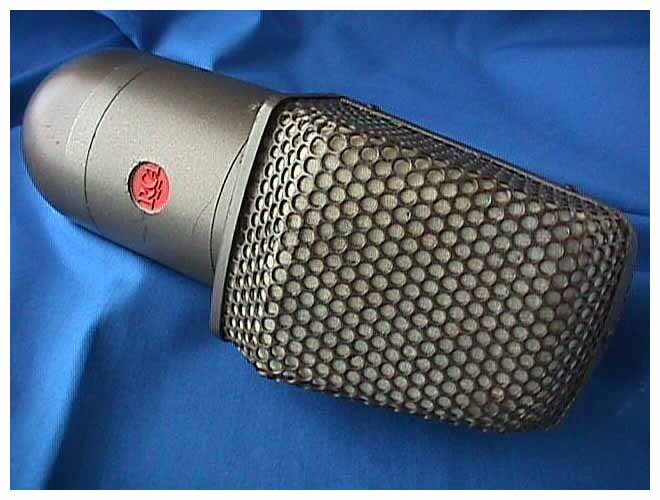
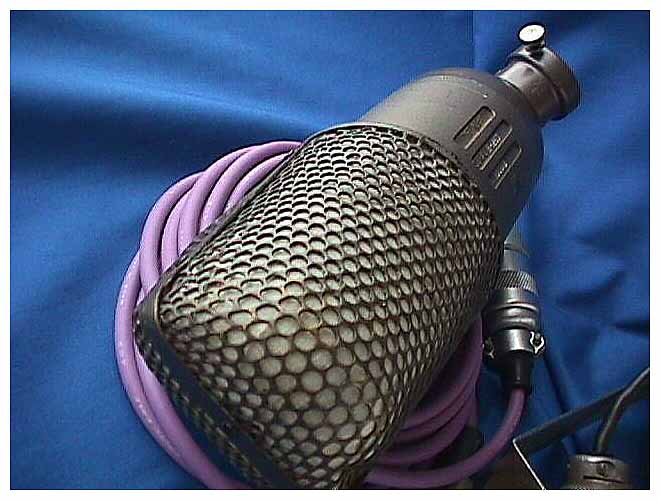
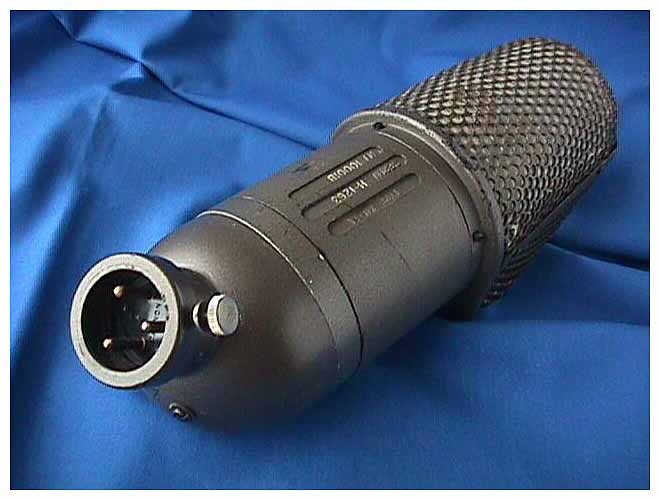
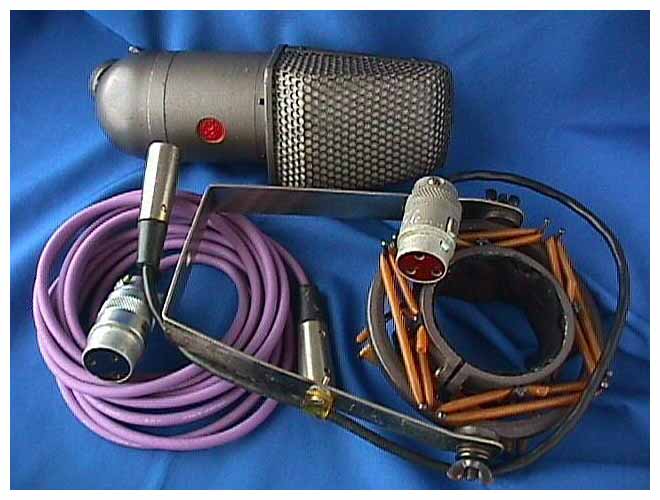
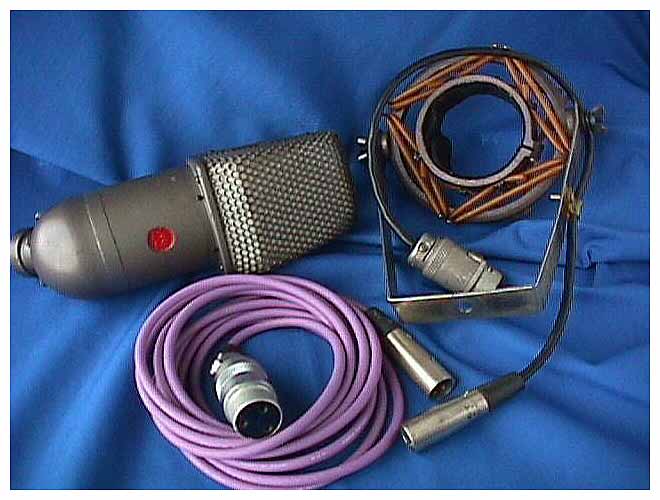
The following ten images come to us through the courtesy of Jack Rubenstein.
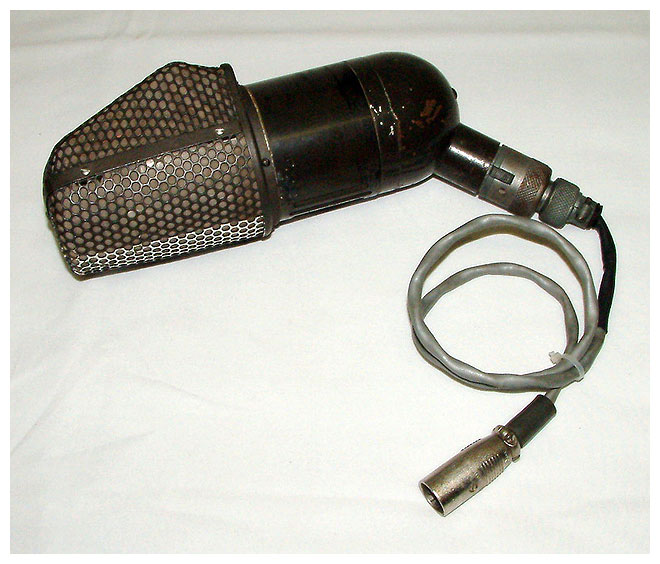
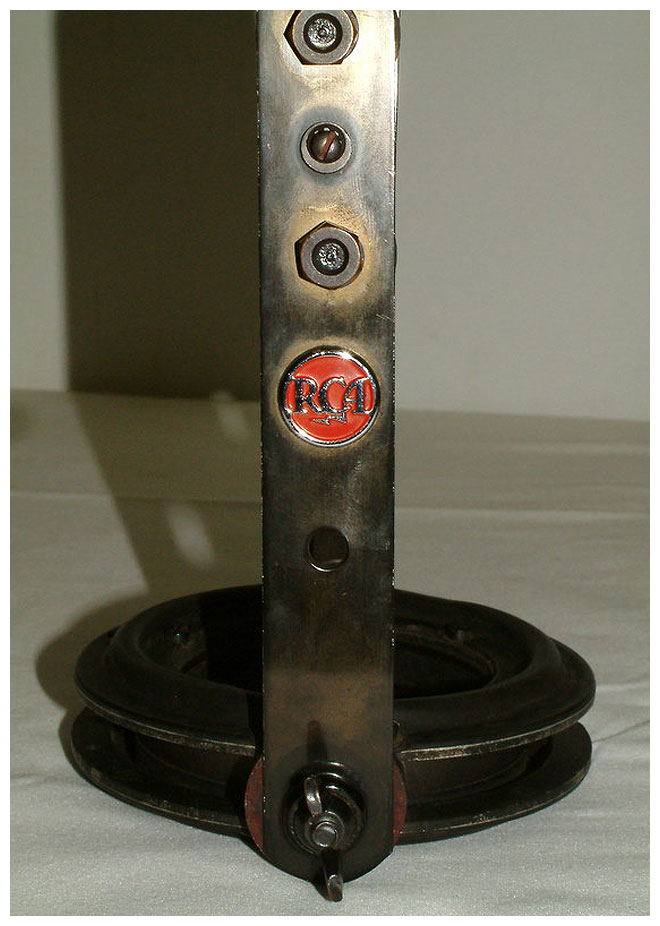
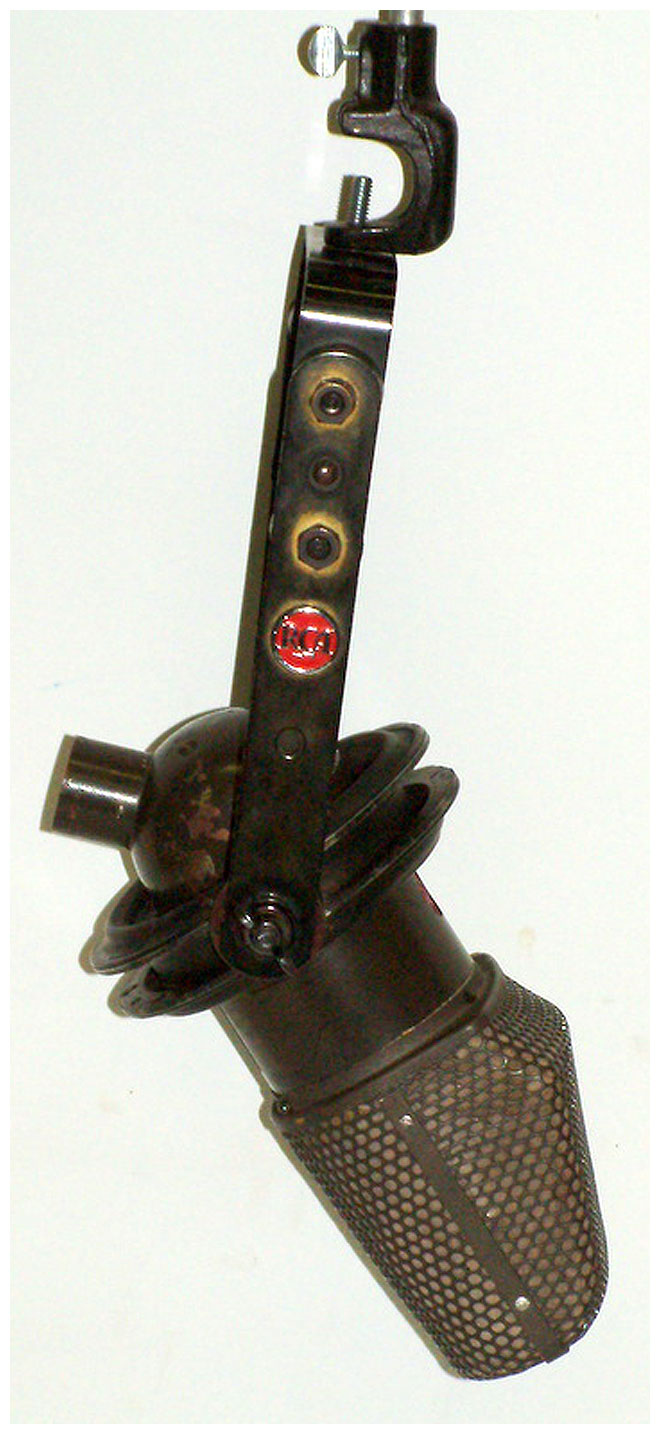
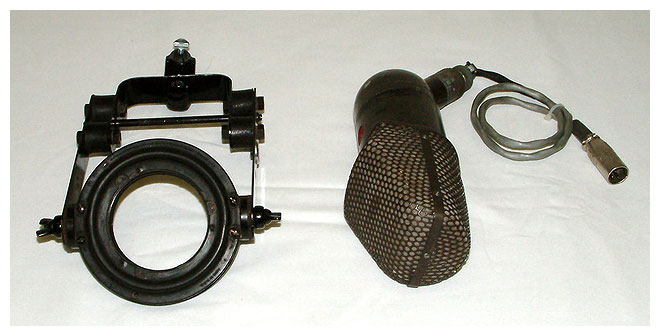
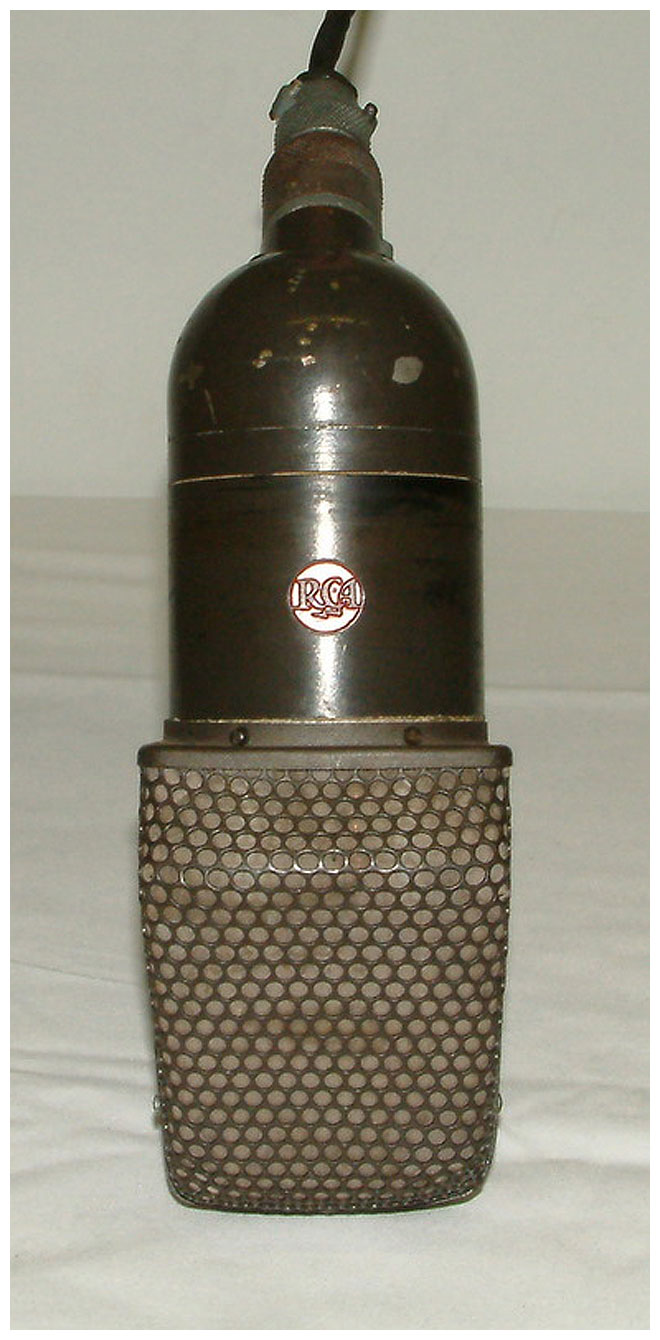
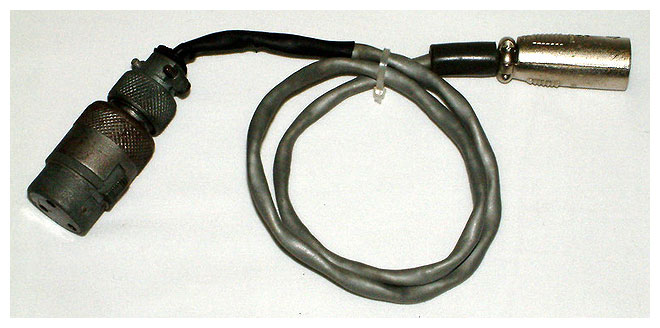
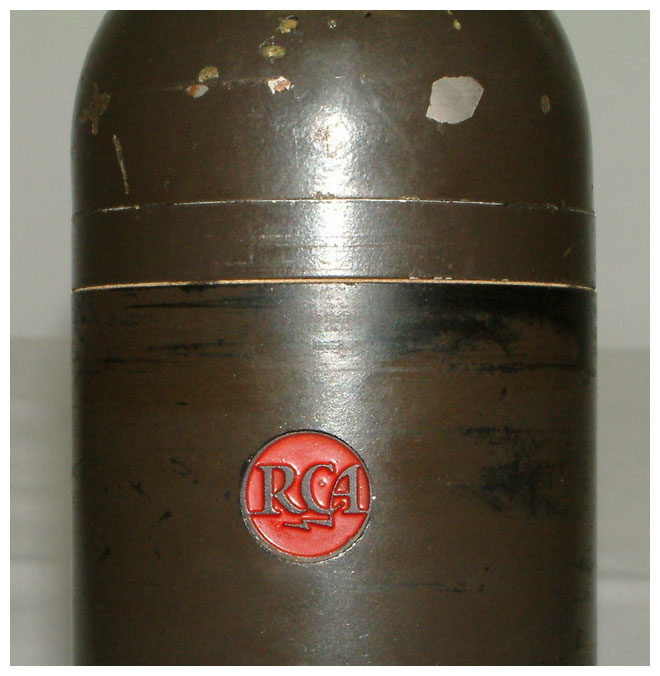
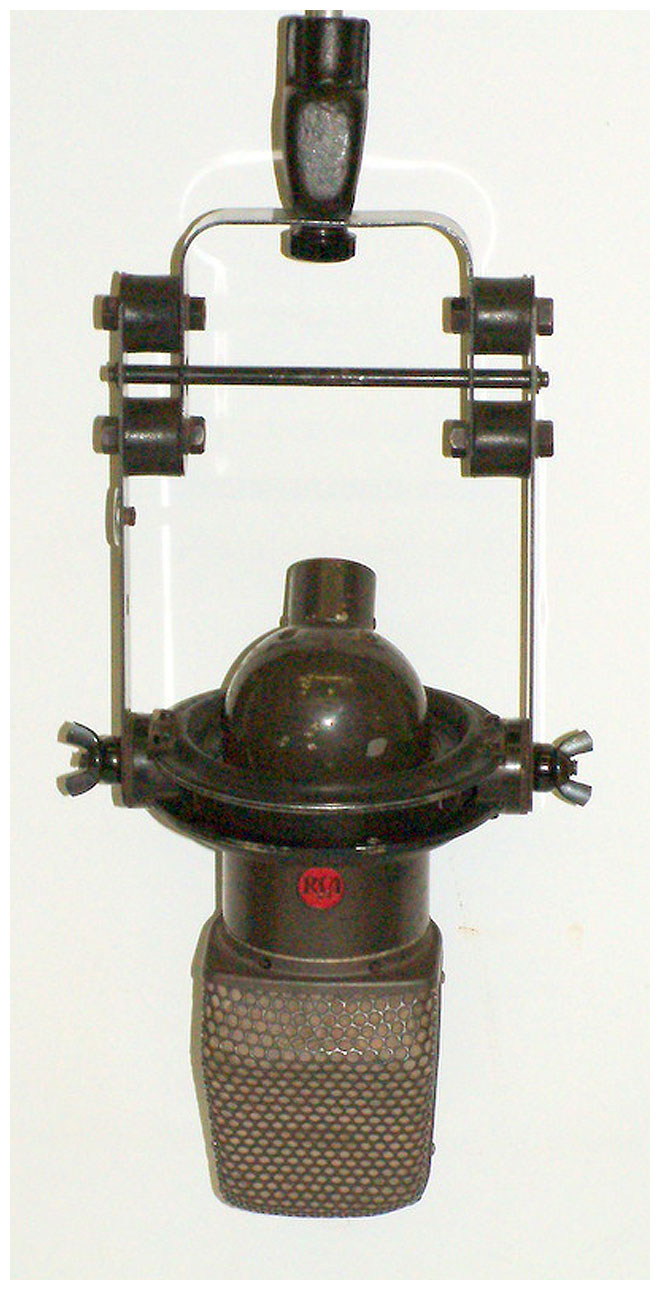


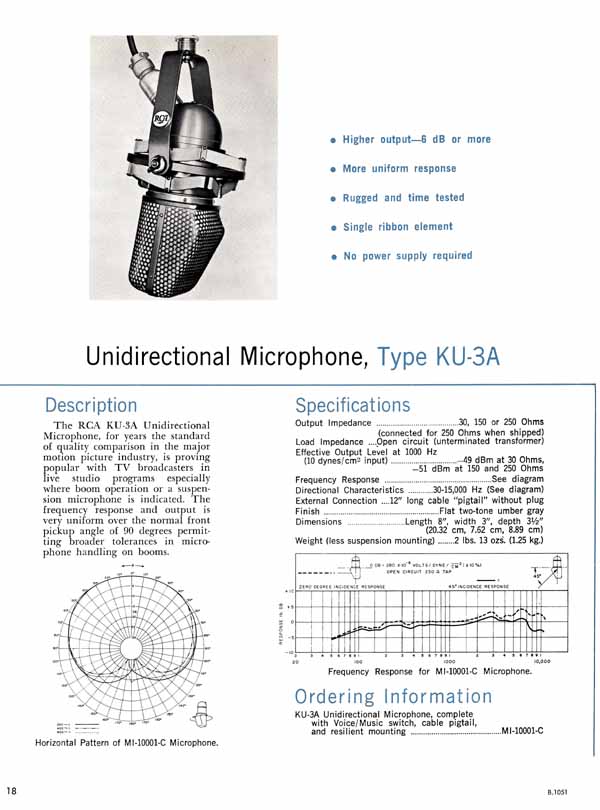
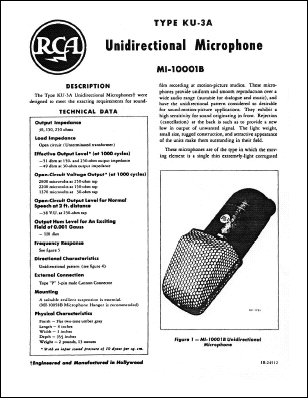
Download the technical data for this mic.
(1.2 megabyte)